Laser Knowledge
Wire Feed Laser Welder
Wire feed laser welders are a type of laser welding system that utilizes a continuous wire feed to deposit filler material during the welding process. These advanced welding machines combine the precision and efficiency of laser welding with the versatility of wire-fed filler addition.
Wire Feed Laser Welder
Laser welding machines are high-precision and efficient welding equipment widely used in industries such as automotive, aerospace, electronics, and more. In the laser welding, laser welding wire feeding is a common auxiliary technique that can enhance welding quality and efficiency. While not a new technology, it has been widely employed in traditional TIG welding. Furthermore, due to the laser beam continuous output and stable energy, it can better cooperate with laser welding wire feeder, enabling the automation of the entire welding process.
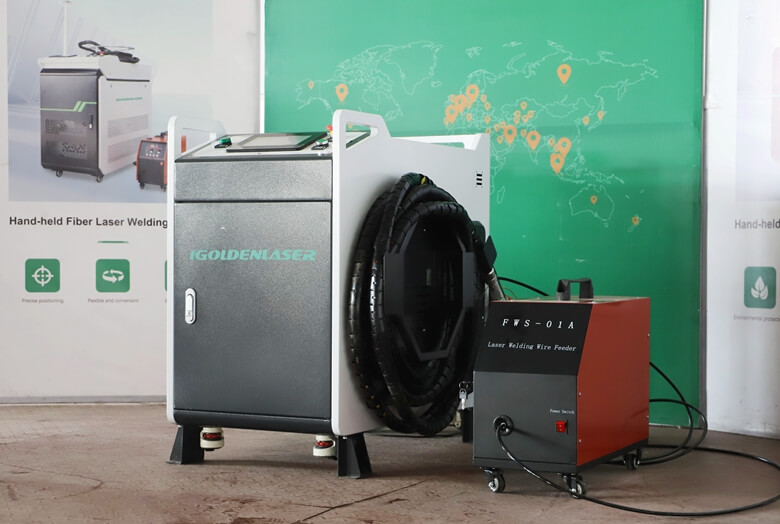

Why Need Wire Feeder for Laser Welding?
1. Filling Material:
Wire feeding enables the precise delivery of welding wire into the weld seam, filling it and enhancing welding quality.
2. Welding Depth Control:
By adjusting the wire feeding speed and welding power, welding depth can be controlled, ensuring the consistency and stability of the weld seam.
3. Increased Production Efficiency:
Wire feeding facilitates automated welding, reducing manual intervention and enhancing production efficiency.
4. Welding Speed Control:
Managing welding speed ensures welding quality and production efficiency.
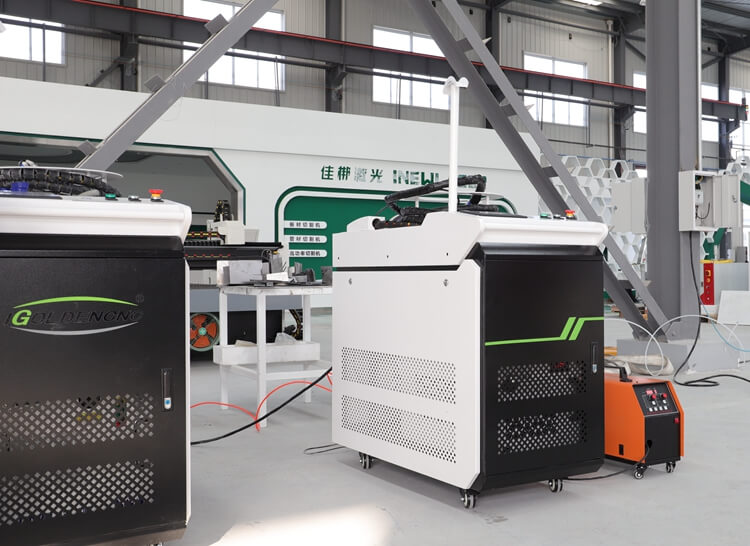
The automatic wire feeding system mainly includes a wire feeding hose, wire spool, and wire feeding mechanism, constituting a crucial component of automated welding equipment. In the CNC laser welding system, the automatic wire feeder can receive commands and operate promptly, achieving intelligent control over the wire feeding speed and direction during the welding process. Various wire feeding methods are available for the automatic wire feeder used in welding. To ensure a stable wire feeding process, users need to choose the appropriate wire feeding method based on factors such as workpiece material, welding parameters, and wire type.
Dual Wire Feeder vs. Single Wire Feeder
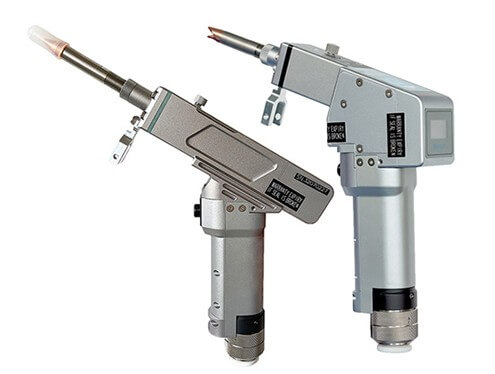
Laser welding machine single wire feed refers to the wire feeding and control through one wire wheel, while double wire feed is through two independent wire wheels for wire feeding and control.
1. Control Mode
The biggest difference is its control mode. In single wire feeding mode, the wire speed and welding current are controlled by the same electronic device. In the double wire feeding mode, two independent devices are needed to control the wire speed and welding current respectively. Therefore, the control mode of double wire feeding is more complicated and requires a higher level of technology to realize precise control.
2. Welding Process
Single wire feeding is suitable for relatively simple welding processes, such as butt welding or multi-layer welding. The double wire feed is more suitable for the welding process of higher requirements of the scene. For example, high-quality, high-speed welding of thicker workpieces or the ability to control two welds individually when corner welding. Typically, single-feed laser welders can handle weld seams of 1.5 to 1.8 millimeters. However, with a dual feed laser welder, seams as wide as 3-4mm can be successfully welded.
3. Cost
The advantages of a single wire feeder are simple control, low cost, and ease of operation. However, the disadvantages are that the quality of the weld seam is more susceptible to compromise and the welding speed is relatively slow. In contrast, the double wire feeding system allows the simultaneous use of two wires, so that the filling of the weld is more uniform, thus realizing faster welding speeds and better welding control; but the disadvantage is the complexity of the equipment and higher costs.
4. Applications
Laser welding machine single wire feeding and double wire feeding applications make a difference. Laser welding machine is a high-precision welding equipment, through the use of laser beam welding, can realize fast, accurate welding process. In the laser welding machine, single wire feed and double wire feed are two different wire feeding methods, the selection of the appropriate wire feeding system depends on the specific welding needs and workpiece characteristics.
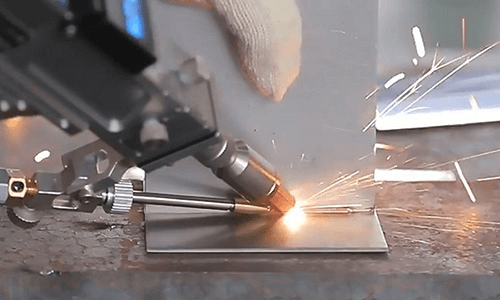
Key features of wire feed laser welders include
Laser Heat Source
The core of the system is a high-energy laser beam that provides the heat source for melting and fusing the materials being welded.
Weld Wire Feeder
A wire feeder mechanism continuously supplies filler wire to the weld pool, allowing for controlled deposition of additional material as needed.
Coaxial Design
The wire feed is coaxial with the laser beam, allowing the wire and laser to converge at the same focal point on the workpiece.
Automated Control
Computer numerical control (CNC) systems provide precise, automated control over parameters like laser power, wire feed rate, and welding speed for consistent, high-quality welds.
Versatility
Wire feed laser welders can handle a wide range of materials, including steels, aluminum alloys, and other metals, with the ability to weld thin to thick sections.
Efficiency
The laser-based heat source and wire feed system enable high welding speeds, deep penetration, and minimal heat input compared to traditional welding methods.
What Kind of Wire is used in Laser Welding Wire Feeders?

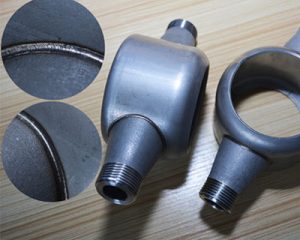
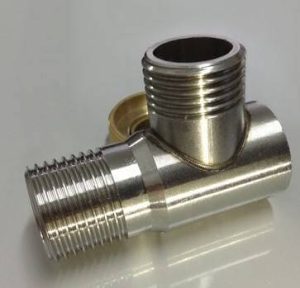
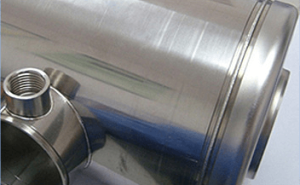
Stainless steel wire: Stainless steel wire is one of the most widely used welding wires for laser welding machine. Stainless steel wire has the advantages of corrosion resistance, high temperature resistance, high strength, etc. It is suitable for welding steel, aluminum, stainless steel, iron alloy, nickel alloy and other materials.
Aluminum alloy wire: suitable for welding aluminum alloy, copper alloy, magnesium alloy and other materials, the wire has good plasticity and good heat-inducing properties, and is not easy to oxidize at high temperatures, so in the aircraft, automotive, electronic equipment and other fields are widely used.
Titanium alloy wire: suitable for welding titanium alloy and other materials, with excellent corrosion resistance and high temperature performance.
Nickel alloy wire: suitable for welding nickel alloy, chromium alloy and other materials, with excellent corrosion resistance and high temperature performance.
Copper alloy wire: suitable for welding copper, copper alloy and other materials, with good electrical conductivity and thermal conductivity properties.
Selecting the Right Wire Feeder for Laser Welder
- Choosing the right wire feeding system is a critical decision that can have a major impact on the success of your welding operation.
- The type of material being welded is a key factor. Whether welding mild steel, aluminum, stainless steel or special alloys, selecting the appropriate wire feeder for the material characteristics is critical to achieving high-quality welding.
- It is also important to evaluate the requirements of a particular application, including factors such as joint configuration, weld location and material thickness. Some wire feeders are designed to perform well in specific welding positions to ensure that the task requirements are met.
- Consideration of the type of wire is equally important, as different wires have different diameters and compositions. The wire feeder must be compatible with the selected wire and is often designed to handle specific wire sizes and types to meet the need for harmonious matching.
- Wire feeders with features such as adjustable speeds and precise control help achieve the desired welding characteristics.

IGOLDEN BLOG
Thank you for visiting the iGOLDENCNC website. iGOLDENCNC is the professional supplier of CNC machinery application solution, within the business of producing and selling CNC machinery and accessories.